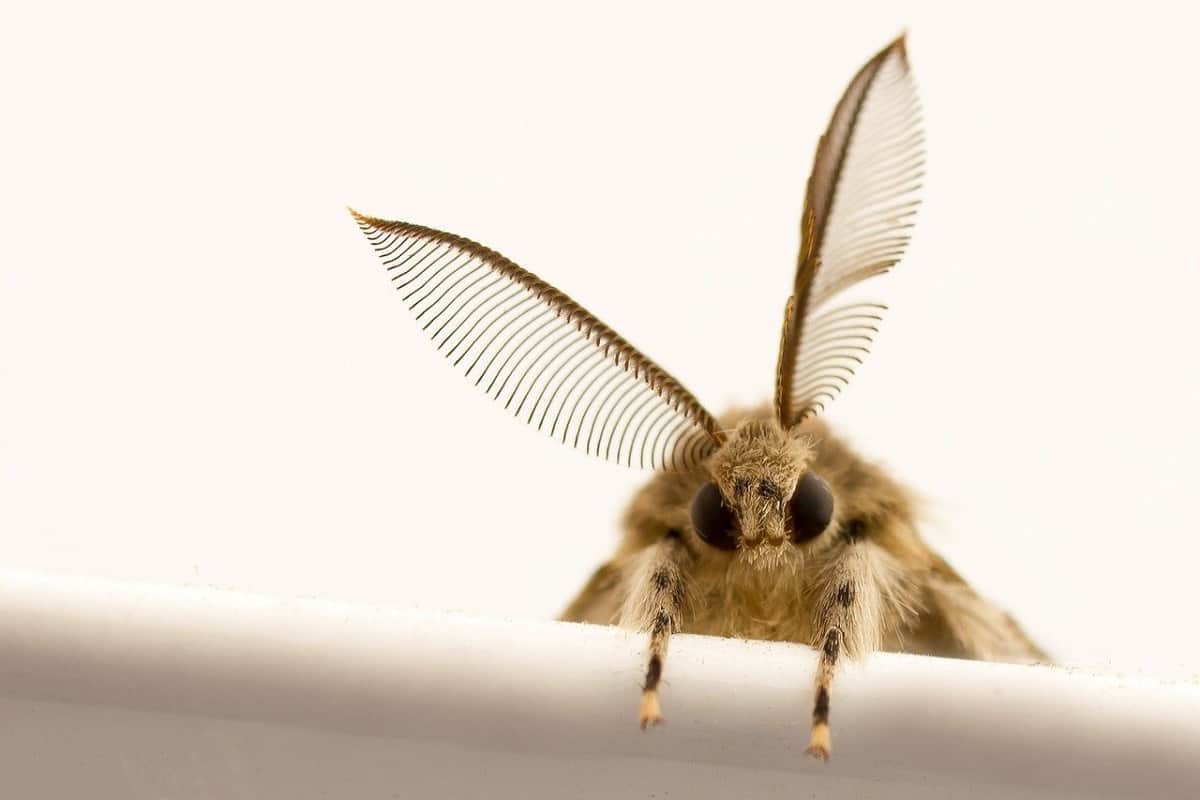Many people are afraid of insects and bugs, and some are worried about being bitten or stung. Moths are one of the most common insects found in homes, and people often wonder if they can bite.
The answer is not straightforward, as it depends on the type of moth and its life stage.
In this article, readers will learn about the different types of moths and whether they have the ability to bite humans.
The article will also discuss the risks associated with moth bites, if any, and what to do if someone is bitten. By the end of the article, readers will have a better understanding of moths and their behavior, and they will know how to protect themselves from any potential harm.
Moths: The Basics
Physical Characteristics of Moths
Most moths are known for their wings, which are covered in scales that create intricate patterns and colors. Moths come in a variety of sizes, from tiny micro moths to large hawk moths with wingspans of up to 10 inches. Moths have long antennae that they use to sense their environment, and their eyes are large and compound, allowing them to see in low-light conditions. (Check our moths’ vision guide)
One of the most distinctive features of moths is their proboscis.
This long, tube-like mouthpart is used to suck nectar from flowers and other sources of liquid.
While some moths have been known to bite humans, the vast majority do not have the ability to do so as their proboscis is not designed for biting.
Behavior of Moths
Moths are primarily nocturnal creatures, meaning they are most active at night. They are attracted to light and can often be found fluttering around streetlights and porch lights.
Moths are also known for their ability to camouflage themselves, using their wing patterns to blend in with their surroundings and avoid predators.
While moths are generally harmless to humans, they can be a nuisance when they infest homes and damage clothing and fabrics.
Clothes moths, for example, lay their eggs on natural fibers such as wool and silk, and the larvae that hatch from these eggs can cause significant damage to clothing and other items made from these materials.
Overall, moths are fascinating insects with a wide range of physical characteristics and behaviors. While some species may occasionally bite humans, the vast majority do not pose a threat and are simply a part of the natural world around us.
Moths and Humans
Can Moths Bite?
Most moths do not bite humans. They are known to feed on nectar and do not have the necessary mouthparts to bite.
However, some species of moths have been known to bite humans, causing skin irritation and a painful sting.
Why Moths May Bite Humans
Moths may bite humans if they feel threatened or if they mistake humans for a food source. Some species of moths have been known to bite humans while they are sleeping, attracted by the carbon dioxide we exhale.
It’s important to note that the irritation caused by moths is typically caused by stings, not bites. These stings can cause skin irritation, redness, and swelling in some people. In rare cases, they can cause an allergic reaction.
Can Moths Sting?
Most moths do not sting humans.
Adult moths do not have what we would recognize as a mouth and do not possess biting mouthparts. However, there are some exceptions to this rule.
Some species of moths, such as the vampire moth, have long, sucking tubes that they can use to penetrate human skin and bite.
If you encounter a moth that you suspect may be capable of biting or stinging, it’s best to avoid contact with it. Wear protective clothing and use insect repellent if necessary. If you are bitten or stung by a moth and experience severe symptoms, seek medical attention immediately.
Preventing Moth Bites
Tips for Preventing Moths
Although moth bites are rare, it is always better to take precautions to prevent them. Here are some tips to help you prevent moths in your home:
- Keep your home clean and free of clutter to discourage moth infestations.
- Store clothing and other fabrics in airtight containers or bags to prevent moths from laying eggs on them.
- Use moth repellents, such as cedar balls or lavender sachets, in your closets and drawers.
- Regularly wash and dry your clothes, especially those made of natural fibers like wool and silk, which are more attractive to moths.
- Check for any signs of moth infestations, such as holes in your clothes or larvae crawling on your fabrics.
What to Do If You Are Bitten by a Moth
If you are bitten by a moth, it is important to clean the affected area with soap and water to prevent infection. You can also apply a cold compress to reduce swelling and alleviate any pain or itching.
In most cases, moth bites are not serious and will heal on their own within a few days. However, if you experience any severe symptoms, such as difficulty breathing or a severe allergic reaction, seek medical attention immediately.
Remember, moth bites are rare and most moths do not have the ability to bite humans. By taking simple precautions and keeping your home clean and free of clutter, you can prevent moth infestations and reduce the risk of getting bitten.
Summary
In conclusion, while moths are generally harmless to humans, some species have the potential to bite or sting if they feel threatened or mistake humans for a food source.
However, the majority of moths do not pose a threat to humans and are simply a part of the natural world around us. By following simple prevention tips, such as keeping homes clean and using moth repellents, humans can coexist peacefully with moths.
In the rare event of a moth bite or sting, cleaning the affected area with soap and water and applying a cold compress can help alleviate symptoms.

